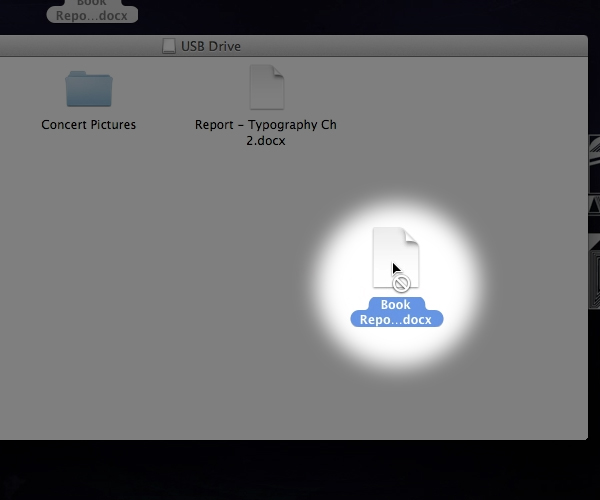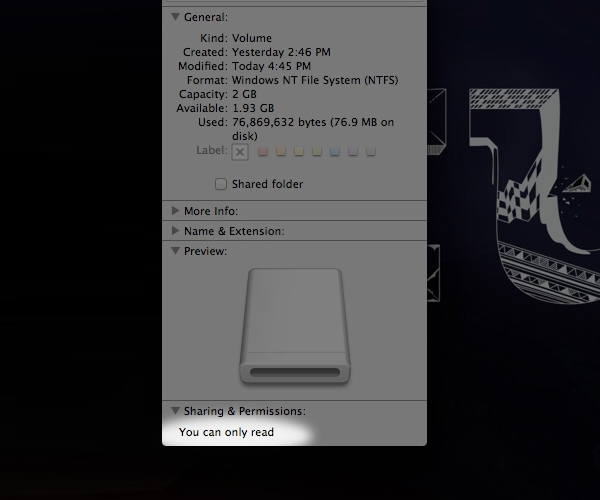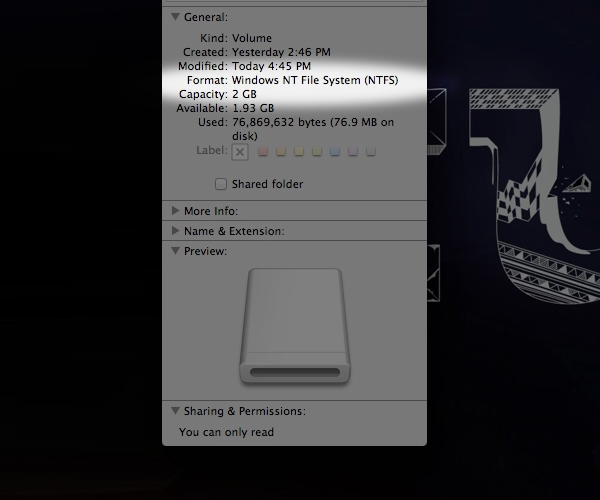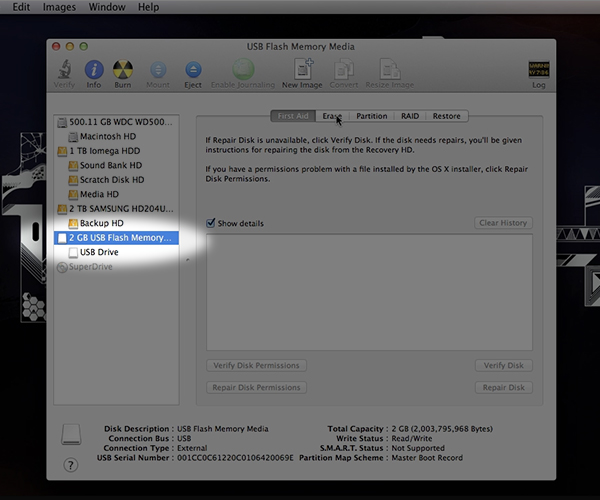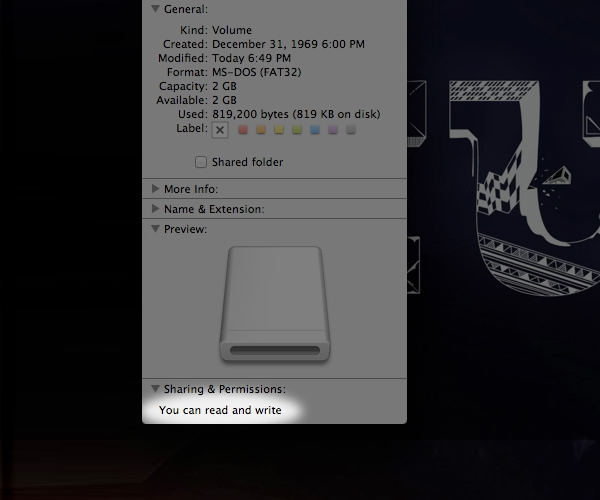To totally unlock this section you need to Log-in
Login
More and more people are finding themselves using both Macs and Windows based PCs. While compatibility is almost a non-issue now days between Macs and PCs, as well as Macs and third party peripherals, there is one area that may still cause confusion. In this tutorial we will explain the "Read Only" error you may run into while using external storage devices, and also show you how simple it is to fix.
The Cause of "Read Only" Disk Errors
We have a USB drive that we purchased and use with various PCs at work and school (or at work). We are able to open the drive and can even copy files from the drive. But if we attempt to copy a file to the drive on our Mac, we get an icon telling us that we are not able to copy the file.
If we try to delete a file, by pressing Command+Delete, nothing happens and, if we right click the file, the option to move it to the trash can is missing. Something is obviously not right with the storage drive.
If you right click the drive and select Get Info, you can see at the bottom of the info window under the sharing and permissions twirl down, you only have permission to read from this drive and nothing else.
The cause of this is due to the filing system the storage device is formatted in. If you look in the general twirl-down under format you can see that this drive is formatted in the windows NT file system. The NTFS file system is a system specifically optimized for Windows in the way that it organizes the data on the drive.
While this file system is readable on Macs because OS X can rearrange the data as it is reading it, the way that NTFS writes the files to the storage device is not; hence, you can read, but not write.
Many storage devices such as USB drives and external hard disk drives come pre-formatted in NTFS because a larger number of consumers are using them on PCs. However, making your storage device Mac compatible, and even cross compatible with Macs and PCs, is as simple as reformatting the drive.
Correcting the "Read Only" Disk Error
First and foremost before proceeding any further, you are about to format your storage device. Be sure to copy any and all file from the drive as all the data on the drive will be erased. This can be a simple task or a long undertaking depending on the size and usage of the storage device, but is a necessary and important step.
You can reformat a hard drive on Mac OS X by using Disk Utility. In the left-hand side inside of Disk Utility you will see a list of all the connected hard drives. Each physical drive is shown with the partitions of that drive nested below. Highlight the physical drive you wish to reformat and on the menu at the top to the right select erase.
NOTE: You are about to format your storage device. Be sure to copy any and all file from the drive as all the data on the drive will be erased.
You can select the physical disc you want to reformat in the tree on the left-hand side of Disk Utility.
You will see two fields where you can choose a file system format and a field to name the new partition you are going to create. If you are just going to use your drive on Mac computers, you can select one of the Mac OS options.
If you wish to create a partition that is cross compatible with Mac computers as well as PCs, you can select either the MS-DOS File System format or the exFAT format. You can rename the hard drive to whatever descriptive name you like then click Erase and now the drive is formatted in a cross compatible filing system. If you click on the drive and select get info you can now see that the permissions are set to read and write.
Conclusion
The NTFS file system format is a great format to use if you are using your drive solely on Windows based PCs. But if you need to use your drive on Mac OS, or on both PCs and Mac OS, NTFS will unfortunately not be the best format to use. In this tutorial we have identified the cause of the “read only” error that Mac users may find when using external storage devices, and also how to fix the problem by reformatting your drive to a fully Mac OS compatible format.
